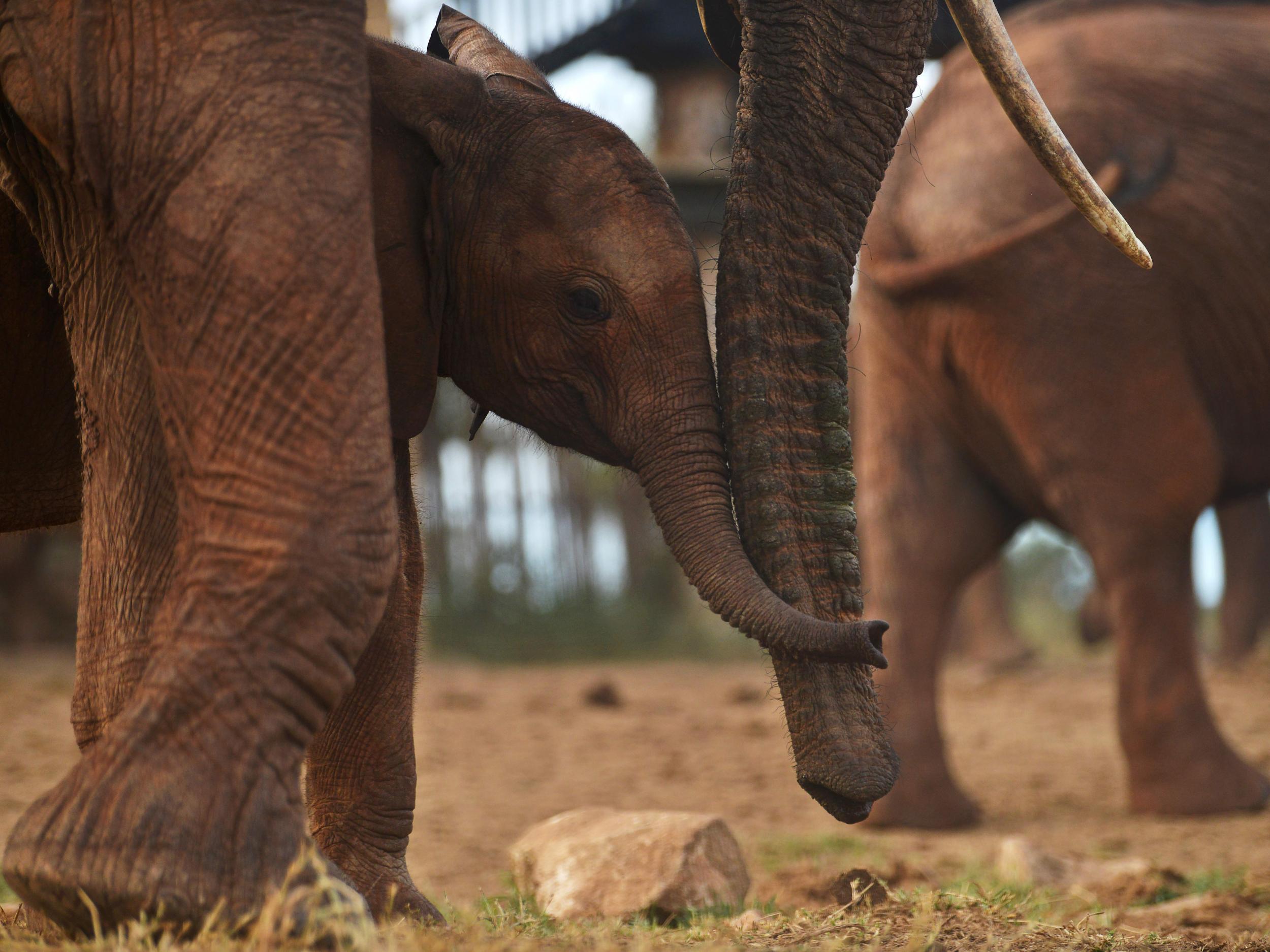Crying elephants and giggling rats – animals have feelings too
Capuchin monkeys understand fairness, sheep recognise their friends, rats make sacrifices for buddies. Yes, animals are sentient. Here's the science

Your support helps us to tell the story
From reproductive rights to climate change to Big Tech, The Independent is on the ground when the story is developing. Whether it's investigating the financials of Elon Musk's pro-Trump PAC or producing our latest documentary, 'The A Word', which shines a light on the American women fighting for reproductive rights, we know how important it is to parse out the facts from the messaging.
At such a critical moment in US history, we need reporters on the ground. Your donation allows us to keep sending journalists to speak to both sides of the story.
The Independent is trusted by Americans across the entire political spectrum. And unlike many other quality news outlets, we choose not to lock Americans out of our reporting and analysis with paywalls. We believe quality journalism should be available to everyone, paid for by those who can afford it.
Your support makes all the difference.Years ago, we believed that we weren’t animals and that animals were here solely for our use. Indeed, a cow was just a walking burger, steak of Sunday roast, keeping itself fresh and tasty ready for when we were hungry.
Luckily, for their sake, things have progressed significantly from then and now we recognise that animals (including our “superior” human selves in that category) can experience emotions from more simple ones such as happiness and sadness to more complex ones such as empathy, jealousy and grief. Animal sentience is defined as the ability to feel, perceive and experience subjectively. In other words, it’s about emotions and feelings and in some respects, having an awareness that “you are you”.
In fact, the scientific evidence for animals being sentient is vast – so clear that three scientists read 2,500 papers studying sentience in non-human animals and concluded confidently that sentience does indeed exist.
If you saw Blue Planet II recently, for example, you’ll have seen the footage of a pilot whale carrying around her dead calf. For most humans, this clearly demonstrates a form of grieving, particularly given the behaviour changes in the wider family pod.
The evidence for sentience
Studies have shown that sheep are able to recognise the faces of their sheep friends even after being separated for two years. Elephants form strong family groups with immense memories and they cry when they are hurt (both physically and emotionally). Capuchin monkeys know when they are receiving unequal pay (grapes vs cucumber) and macaques develop individual cultures, particularly when it comes to how one should wash a potato.
Chimpanzees like to keep the peace by redistributing bananas if someone complains that their share is unfair and even rats have been shown to demonstrate empathy by giving up their favourite snack to save a drowning friend. They also giggle when being tickled.
Fish use tools and octopuses weigh up whether the effort needed to gain a food reward is worth it depending on the type of food. There is also plenty of evidence on how animals have individual personalities and indeed how some are a “glass half full” type while others are more “glass half empty”.
But it isn’t just from watching their behaviour that we can say animals are sentient. When we examine the brains of species (and indeed individuals), we can draw parallels from what we know about human brains and start to make assumptions.
Emotions mainly stem from a part of our brain called the “limbic system”. Our limbic system is relatively large and indeed humans are a very emotive species. So when we come across a brain that has a smaller limbic system than ours, we assume it feels fewer emotions. But, and here’s the big but, when a limbic system is comparatively much bigger than ours, we don’t assume it feels more emotions than us. Most likely because we cannot imagine something that we do not feel or even know about.
The act of killing
In some marine mammals, their limbic system is four times larger than ours. In addition to this, some marine mammals have spindle cells, which we originally thought were unique to humans, allowing us to make rapid decisions in complex social situations. Arguably, would these evolve if they weren’t used for the same (or at least similar) purposes?
One potential reason why we don’t like thinking too much about animal sentience is because we like to kill animals. Some to eat and some, quite simply because we do not like them. Look at those poor spiders in autumn, coming in to find some shelter, only to meet their end being smacked by a slipper-wielding human. We also turn a blind eye to systematic cruelty on an mass scale to ensure we save some money on meat at the supermarket. It’s far easier to pretend these animals don’t have feelings or emotions so that we can enjoy a cheap dinner without the emotion of guilt creeping in.
So is animal sentience a big deal? Yes, it is. We need to ensure we include it everywhere to safeguard the welfare of all animals, not just our pets. We live in a world where a lady putting a cat in a bin causes immense public shaming, yet we’ll pop down to the nearest fast food outlet and eat meat from an animal that has lived the most abhorrent life ever without thinking twice. It really is time that we spent more time thinking about the thinking beings around us.
Emily Birch is a research fellow in human canine interactions at Nottingham Trent University. This article was originally published on The Conversation (theconversation.com)
Join our commenting forum
Join thought-provoking conversations, follow other Independent readers and see their replies
Comments